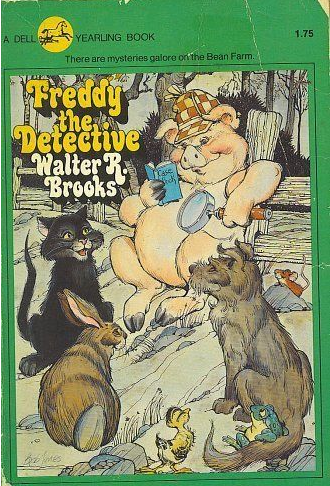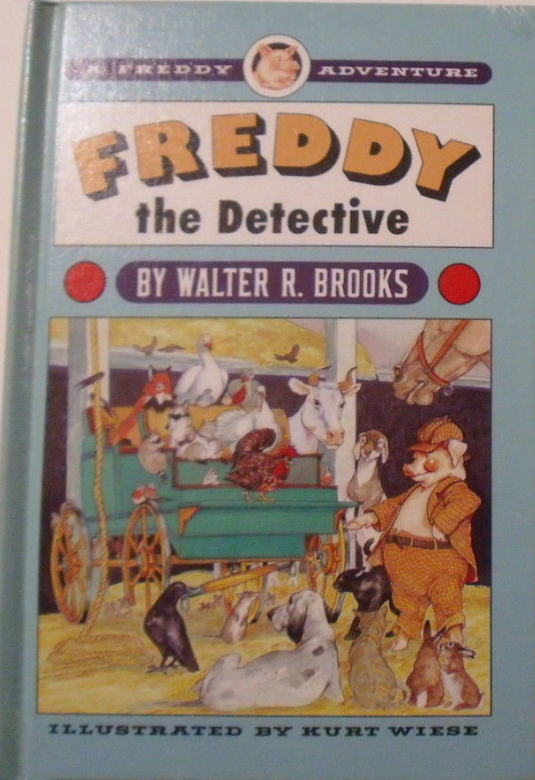You know the old adage not to judge a book by its cover? Never was it more true than in the case of Freddy the Detective. I happen to own this book is several different covers. Not one of them properly recommends the story inside. In fact, prior to getting a really excellent recommendation on the book, I had no intention of ever reading it. Freddy just seemed dumb.

Last year I saw Freddy get recommended in our book club group again and again by really great readers. I kept wondering why. In particular, one of my favorite book/homeschool bloggers was expressing love for Freddy. I realized that there simply must be something between those pages that was compelling. I set it aside for a lazy winter day.
After Christmas this year, my kids and I needed something light and delightful. I reached for Freddy on a whim and was laughing within paragraphs. Written in 1932, Freddy has fairly sophisticated language, wholesome traditional values, a rich plot, and just enough whimsy to be worthy read-aloud material.
Without realizing it, we had walked into the middle of a series. Freddy the Pig is the central character in a series of 26 children’s books written between 1927-1958 by Walter R. Brooks. Freddy the Detective is the third book in the series. While it was obvious to us that other books must have come before Freddy the Detective, Brooks does not assume that readers have read them. So, while having read those books may have helped us get to know the characters more quickly, we did not feel as though there was a gaping hole in our understanding.
In this highly entertaining book, Brooks manages to capture the barnyard feel of Charlotte’s Web, the intrigue of Sherlock Holmes, the antics of Thornton Burgess or Beatrix Potter, and the classic Americana of The Andy Griffiths Show. It’s just plain smart. And funny.
Brooks makes a really interesting choice about the animal and human relationships. He furnishes his animal characters with keen intelligence, the ability to read, varied means of communication with humans (except speech), and self-government. The animals have a very complex and exciting barnyard social structure. They have an interesting relationship with Farmer Bean and his wife. They consider themselves (and apparently the farmer considers them) employees of the farm. Each animal has a role to play but they also have a lot of interplay with the humans. For example, the animals are welcome to move in and about the farmhouse during the day. That said, the animals cannot speak human words. Even though they can read and understand English, they cannot speak it. When they need to communicate with the humans, they have to be extremely creative. Brooks accomplishes this in entertaining ways.
We read this book as a read aloud. That said, we had several copies of it from the library book sale. And so, as I was finishing the second chapter on the second night, my nine-year-old was laughing before the jokes. I looked at him questioningly. “Mom! I couldn’t help it. I have a copy in my bed and I read ahead. Freddy is trying to solve one mystery but he ends up solving a couple of others first. It is so funny. I couldn’t stop reading it.” That was all that his seven-year-old sister needed to hear. She smuggled a copy into her bed and also read ahead. Regardless of how much they read ahead (or re-read for enjoyment), they insisted on me reading at our regular pace because they enjoyed hearing it so much. I would say that that was a read aloud win for us!

Many of the Freddy books are available at Audible, including Freddy the Detective.
3 Comments
Comments are closed.